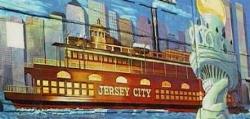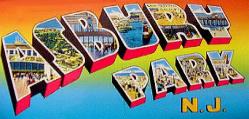 |  |  |
|
| ||
 |  |  |
 |  |  |
|
| ||
 |  |  |
|
|
By Harriet Phillips Eaton
Published 1899
This Web version, edited by GET NJ
COPYRIGHT 2002
The Common Council of Jersey City granted permission to lay a single track of iron rails in Montgomery street, Newark avenue, Grove street to Montgomery street, Gregory street to York street, and Hudson street, to Montgomery street. After the railway was laid it was lawful for the company to run cars to be drawn by horses. These first street cars were peculiar; they were like the body of an omnibus set on a truck; the driver's seat was up on top in front; by means of a strap he opened or pulled shut a door in the rear of the car; the door was reached by two or three steps. Fares were passed up to the driver through a hole back of the driver's seat. At the ends of the route the driver turned the horses and the car turned upon the truck, which was stationary. Long after ordinary street cars were introduced these were used for night traffic, the last car leaving the ferry about midnight.
The Common Council of Bergen granted a franchise in 1864 for the operation of horse cars; this franchise included that part of the city known as Lafayette. As late as 1870 long open sleighs were used in heavy snows during the winter, instead of the cars. For ten or fifteen years the cars were not heated during the cold weather, straw being put on the floor as a protection for cold feet. The first trolley car was run in Jersey City on the Montgomery street line, from Bergen Avenue to Monmouth street, in 1890. In 1893 the Consolidated Traction Company took charge, and in November of that year on several of the lines the horse cars were replaced by the trolley system. The extensive car sheds of the Company are on the south side of Montgomery street east of Bergen avenue, and on the north side of Montgomery street between Tuers avenue and Jordan street, partly on the site of Tuers Pond, which was filled in over thirty years ago.
|
|
|
|
 Your Ancestors' Story |
 Bruce Springsteen's Jersey Shore Rock Haven! |

|
UrbanTimes.com |